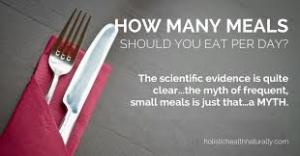How Can I Fit in Exercise at Work?
Set a timer. Use the alarm clock on your phone to remind you it’s time to rise up. Set it, then put your phone out of reach. When you get up to turn it off, try the moves below. Aim for a walk around every hour. Easy!
Strike a plank pose. We’re big fans of this multitasking yoga pose. It’s the ultimate one-move routine that quickly works three major muscle groups — your arms, legs, and core. Lie on your stomach with your feet together and forearms placed on the ground. Your arms are straight down from your shoulders to your elbows. Your toes are tucked as they are in a push up. Tighten up stomach and glutes. Then raise your body off the floor so you form a straight line from your feet to shoulders — keep your head in line. Hold the position for a few seconds — 25 is good, but 45 is better, and build toward 2 minutes….BRAVO!
Take a quick walk. Head to the bathroom, water cooler, grab a cup of Joe, or meet a coworker to discuss a work issue. Tiny breaks are proven to help. Extra points for a glass of water!
Challenge yourself. How far can you walk at work and still be back at your desk in two minutes?
Head for the stairs. You’ll burn about 29 calories climbing stairs for three minutes — proof that the steps in your office or home are really exercise equipment hiding in plain sight!
Sit on an exercise ball. Keep the big muscles in your legs, butt, and core engaged while you work by perching on a big exercise ball instead of your office chair. Do it for 10-15 minute periods every hour or two throughout the day.
March in place. Tethered to your headphones? Stand up and start marching. Lift those knees! Keep it up for a minute, then do this…
Stand up, sit down, repeat. Keep your back straight and your arms at your sides or held out in front of you (in other words, don’t push off with your hands). Use your thigh and butt muscles to rise from your seat, then slowly sit down again. Repeat as many times as you can.
Just stand up. Your body works 30 percent harder when you’re on your feet. Try a standing desk at work—they’re available these days. Or get a treadmill desk!
At home: Take a commercial break. Prime time’s 14-21 minutes of advertisements every hour give you plenty of time to move around without missing a minute of your favorite shows.
Get Healthy!










 Protein is an essential macronutrient. We can’t make it. We need to consume protein to stay healthy, fit, happy, and long-lived. But we need to consume the right amount at the right times.
Protein is an essential macronutrient. We can’t make it. We need to consume protein to stay healthy, fit, happy, and long-lived. But we need to consume the right amount at the right times.